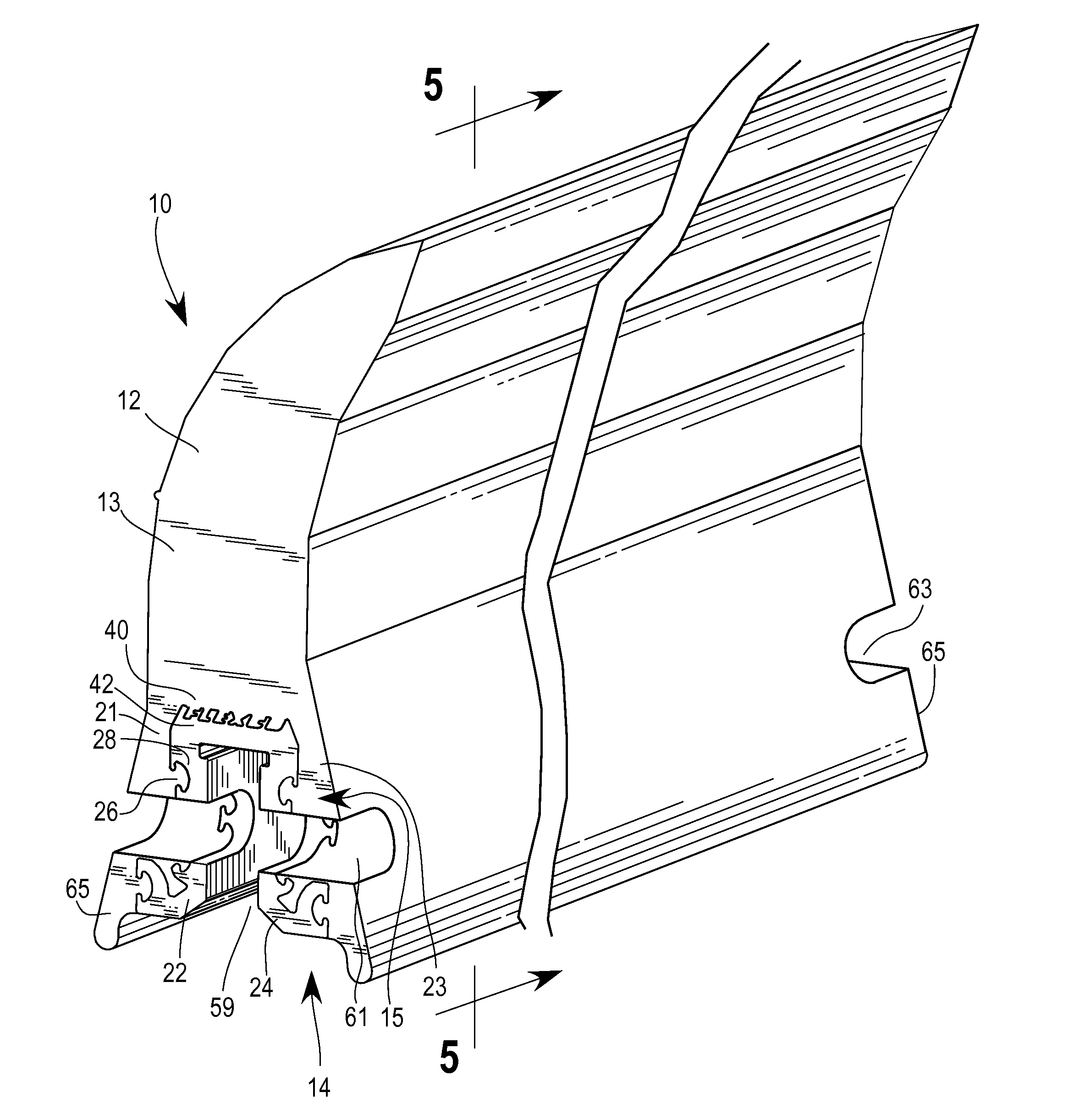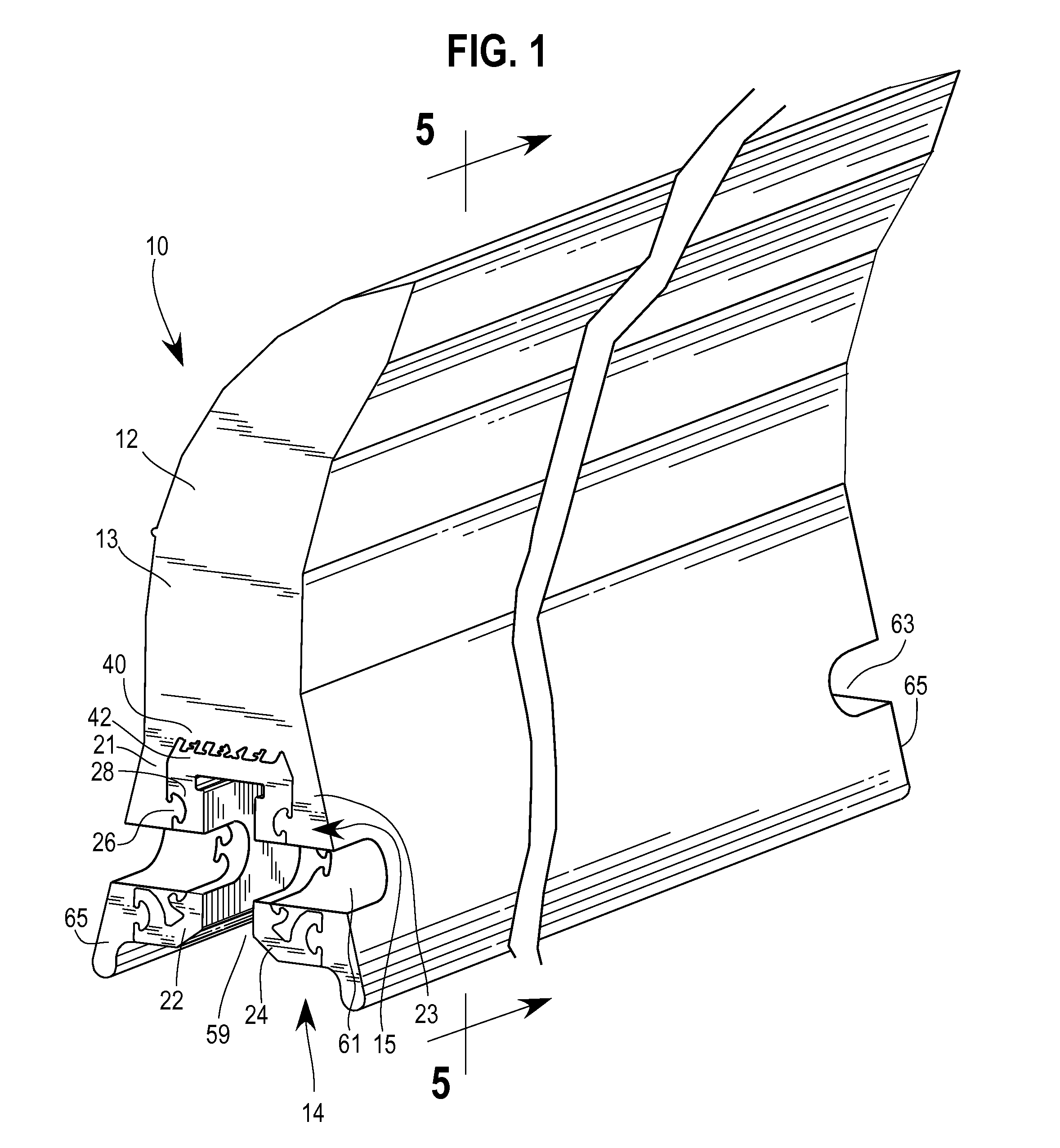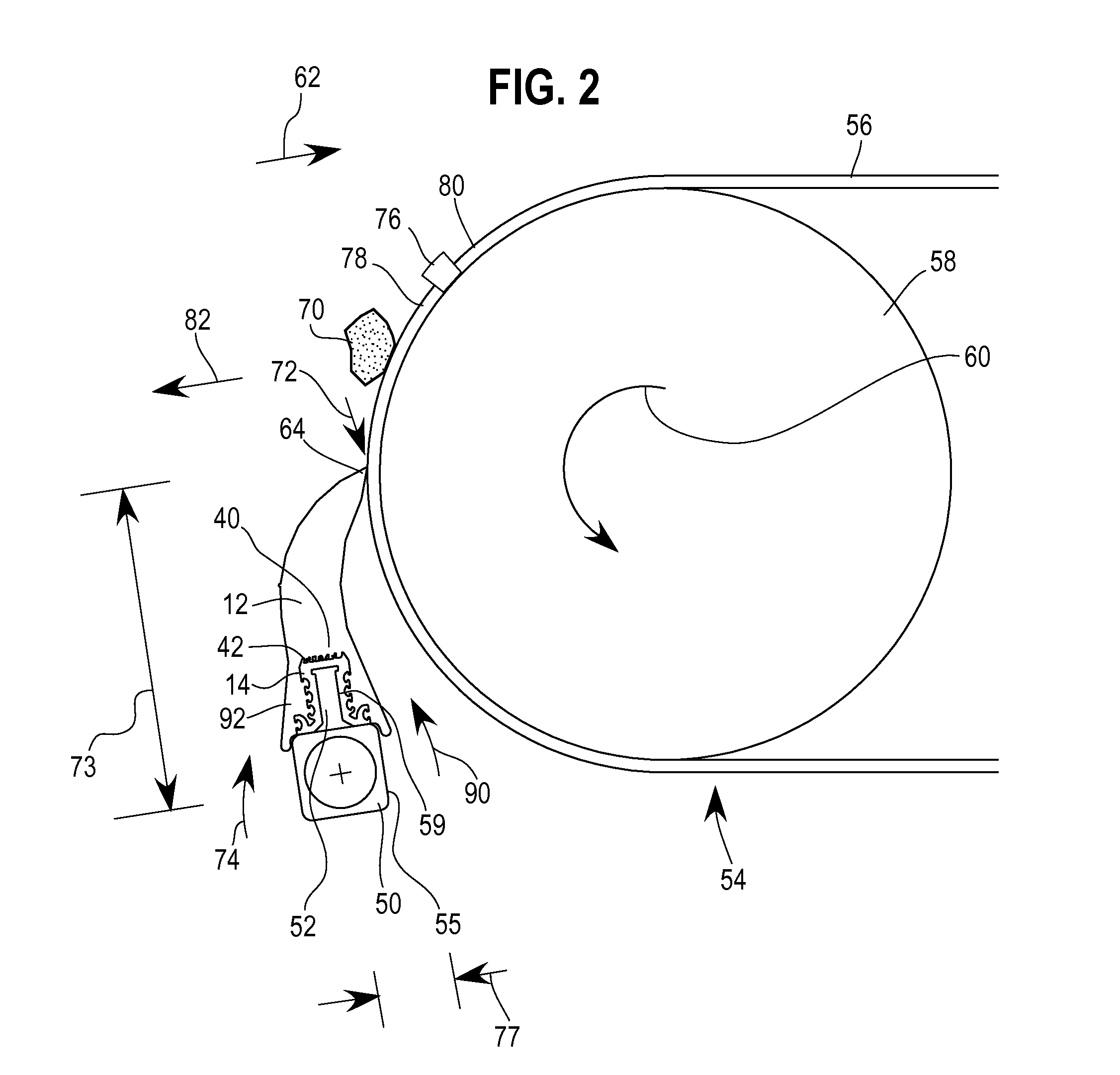Scraper blade for conveyor belts
a conveyor belt and scraper blade technology, applied in the direction of conveyor parts, cleaning, transportation and packaging, etc., can solve the problems of reducing the connection strength between the scraper blade and the insert, increasing the likelihood of an air bubble becoming trapped between the blade and the insert of the conventional scraper blade, and reducing the effect of the recess shape, so as to improve the connection strength and provide durability and strength. the effect of the connection
- Summary
- Abstract
- Description
- Claims
- Application Information
AI Technical Summary
Benefits of technology
Problems solved by technology
Method used
Image
Examples
Embodiment Construction
[0022]With reference to FIG. 1, a scraper blade 10 is provided having a blade 12 with a molded body 13 of resilient material and an insert 14 of molded in situ with the blade body 13. In one embodiment, the blade 12 is made of the first material and is molded onto the insert 14 which is made of a rigid second material. By rigid, what is meant is that the structure has the ability to generally retain its respective shape during normal handling and use. For example, the blade 12 may be made of urethane or an elastomer. The insert 14 may be made of a rigid material, such as metallic material or a rigid thermoplastic. Further examples of the insert 12 material include aluminum, high-density polyethylene, and nylon, and other extruded or injection molded plastics.
[0023]The scraper blade 10 has an interface 15 between the blade 12 and the insert 14 that securely fixes the blade 12 with improved strength and durability over some prior scraper blades utilizing mold locking of a blade onto a...
PUM
 Login to View More
Login to View More Abstract
Description
Claims
Application Information
 Login to View More
Login to View More - R&D
- Intellectual Property
- Life Sciences
- Materials
- Tech Scout
- Unparalleled Data Quality
- Higher Quality Content
- 60% Fewer Hallucinations
Browse by: Latest US Patents, China's latest patents, Technical Efficacy Thesaurus, Application Domain, Technology Topic, Popular Technical Reports.
© 2025 PatSnap. All rights reserved.Legal|Privacy policy|Modern Slavery Act Transparency Statement|Sitemap|About US| Contact US: help@patsnap.com



